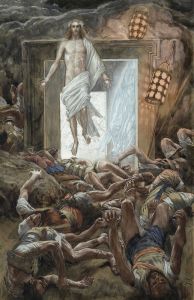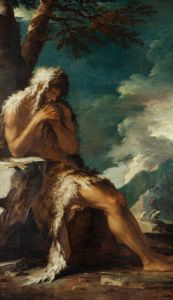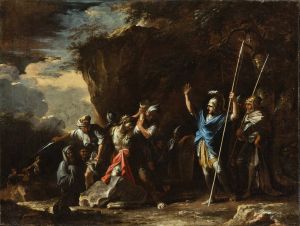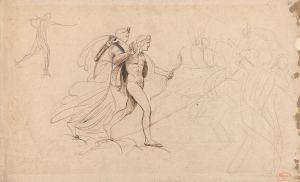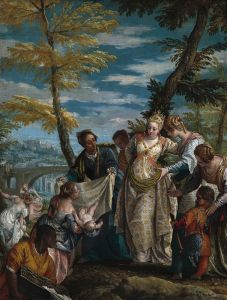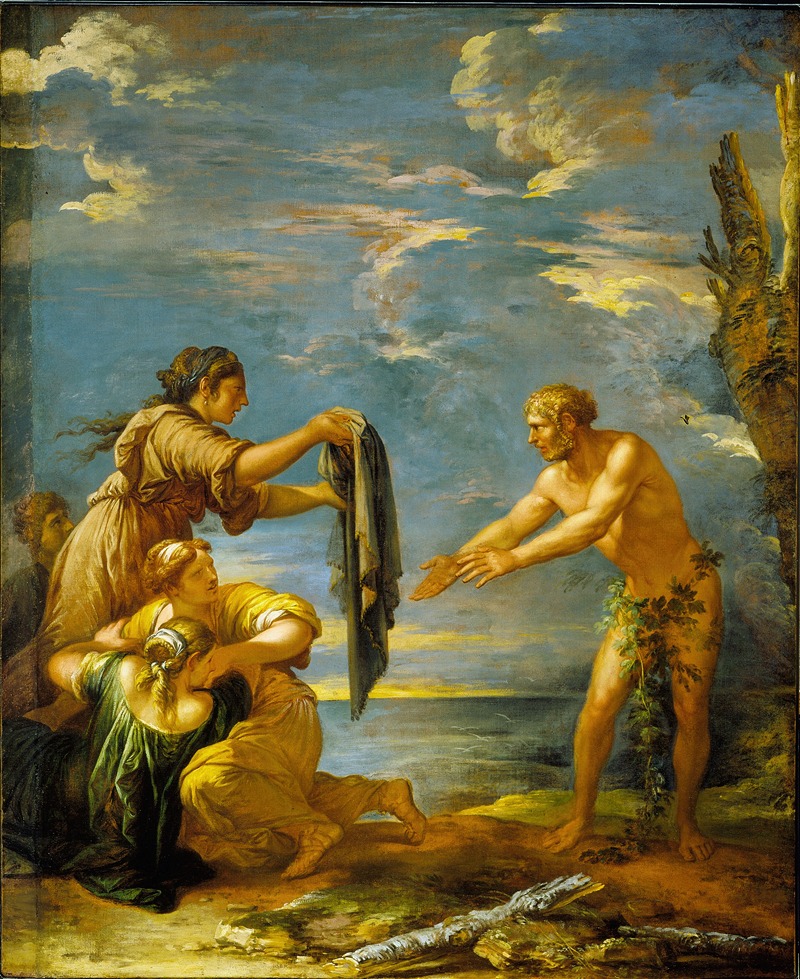
Odysseus and Nausicaa
A hand-painted replica of Salvator Rosa’s masterpiece Odysseus and Nausicaa, meticulously crafted by professional artists to capture the true essence of the original. Each piece is created with museum-quality canvas and rare mineral pigments, carefully painted by experienced artists with delicate brushstrokes and rich, layered colors to perfectly recreate the texture of the original artwork. Unlike machine-printed reproductions, this hand-painted version brings the painting to life, infused with the artist’s emotions and skill in every stroke. Whether for personal collection or home decoration, it instantly elevates the artistic atmosphere of any space.
Salvator Rosa's Odysseus and Nausicaa is a painting attributed to the 17th-century Italian Baroque artist Salvator Rosa. Rosa, known for his dramatic landscapes, historical subjects, and allegorical works, was a painter, poet, and printmaker who often infused his art with a sense of theatricality and emotional intensity. This particular painting depicts a scene from Homer's Odyssey, one of the most celebrated works of ancient Greek literature.
The artwork illustrates the moment when Odysseus (known as Ulysses in Roman mythology) encounters Nausicaa, the daughter of King Alcinous of the Phaeacians. In the Odyssey, Odysseus is shipwrecked on the island of Scheria and washes ashore, exhausted and naked. Nausicaa, accompanied by her handmaidens, is at the shore washing clothes when she discovers the stranded hero. Despite his disheveled appearance, Nausicaa shows compassion and offers him assistance, marking a pivotal moment in Odysseus's journey back to Ithaca.
Rosa's interpretation of this scene reflects his characteristic style, which often emphasized dramatic contrasts of light and shadow, dynamic compositions, and a heightened emotional atmosphere. The painting likely captures the tension and humanity of the encounter, focusing on the vulnerability of Odysseus and the grace of Nausicaa. Rosa's works frequently drew on literary and mythological themes, and his ability to convey narrative through visual means is evident in this piece.
While Salvator Rosa's oeuvre is well-documented, specific details about the provenance or current location of Odysseus and Nausicaa are not widely available. The painting is not among Rosa's most famous works, and it has not been the subject of extensive scholarly analysis compared to some of his other pieces. Nonetheless, it remains an example of Rosa's engagement with classical themes and his ability to bring mythological stories to life through his distinctive artistic vision.
As with many works from this period, the attribution to Rosa has been accepted by art historians, but further research could provide additional insights into its history and context.





